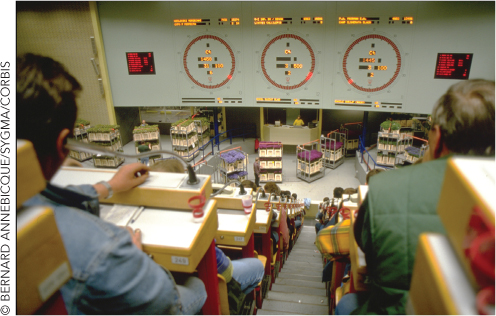Markets Link the World
Let’s take a closer look at the story of just one product. It’s Valentine’s Day. You have just given your boyfriend or girlfriend a beautiful, single-stemmed rose, one of 180 million that will be sold today.1 Where did the rose come from and how did it get into your hands?
Chances are good that your rose was grown in Kenya in the Lake Naivasha area to the northwest of Nairobi.2 Over 50,000 tons of roses are grown in Kenya every year, almost all for export. The Kenyan women who do most of the fieldwork know very little about the strange Western celebration of love called Saint Valentine’s Day, but they don’t have to. What they do know is that they get paid more when the roses are debudded so that they bloom just in time for delivery on February 14.

No one wants to give (or receive) a wilted rose, so everyone involved in the rose business has an incentive to move quickly. In a matter of hours after picking, the roses travel in cooled trucks from the field to the airport in Nairobi, where they are loaded onto refrigerated aircraft. Within a day, the flowers are in Aalsmeer, Holland.
Aalsmeer is the home of the world’s largest flower market. On a typical working day, 20 million flowers are flown into this tiny Dutch town. The flowers are paraded in lots before large clocks, clocks that measure not time but prices. Beginning with a high price, the clocks quickly tick downward until a bidder stamps a button indicating that he or she is willing to buy at that price. By the end of the day, 20 million flowers have been sold, and they are once again packed onto cooled airplanes to be flown to the world’s buyers in London, Paris, New York, and Topeka. From Kenya to your girlfriend’s or boyfriend’s hand in 72 hours.3
The worldwide market links romantic American teenagers with Kenyan flower growers, Dutch clocks, British airplanes, Colombian coffee (to keep the pilots awake), Finnish cell phones, and much, much more. To bring just one product to your table requires the cooperative effort of millions.
Moreover, this immense cooperation is voluntary and undirected. Each of millions of people acting in his or her own self-interest play a role, but no one knows the full story of how a Kenyan rose becomes a gift of love in Topeka because the full story is too complex. Nevertheless, every Valentine’s Day you can count on the fact that your local florist will have roses for sale.
The market is the original Web, and it’s more dense, interconnected, and alive with intelligence than its computer analog.
